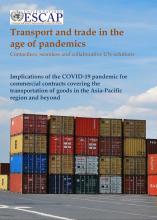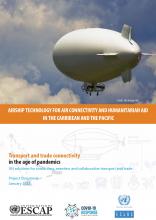
Implications of the COVID-19 pandemic for commercial contracts covering the transportation of goods in the Asia-Pacific region and beyond
With a view to increase awareness of Government officials and transport operators in Asia and the Pacific region on the ways of addressing some of the key legal implications of COVID-19 for commercial contracts covering transport of goods and to assist shippers and consignees, particularly in developing countries in addressing some of the key commercial law implications of the COVID-19 crisis, the UNESCAP secretariat conducted research and preliminary analysis of the challenges arising from the COVID-19 crisis affecting international commercial contracts, including contracts on international carriage of goods by various modes of transport, focusing particularly on land and multimodal transport.
ITF Southeast Asia Transport Outlook
This report provides scenarios for future transport demand and CO2 emissions in Southeast Asia up to 2050 to help decision-makers chart pathways to sustainable, resilient transport. The scenarios reflect existing policy initiatives and specific constraints in the region. They also examine the potential impact of policies addressing the challenges and opportunities for transport from Covid-19.

Airship Technology for Air Connectivity and Humanitarian and the Caribbean and the Pacific
The Airship transport alternative, in its diverse engineering variants, has the potential to be a game-changing technology with significant development in recent years. It offers the technical capabilities to make a broad contribution to the optimization of mobility and logistics networks in isolated communities and territories, especially but not only in Small Island Developing States (SIDS). This is particularly important in the context of the ongoing COVID-19 pandemic, as in the event of a disaster, different aid agencies are deployed with support in the distribution and logistics of perishable and essential cargo, equipment, and assistance personnel. This innovative mode should be incorporated into the transport matrix (both nationally and regionally), for the latter to move towards more efficient, sustainable, and resilient networks.